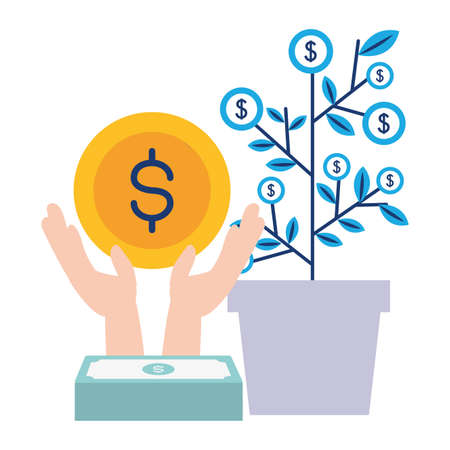Introduction to Junior ISAs
If youre a parent or guardian in the UK, you may already be thinking about how to give your child the best possible start in life—especially when it comes to their financial future. One of the most popular ways British families are saving for their children is through a Junior Individual Savings Account (Junior ISA). But what exactly is a Junior ISA? In simple terms, its a tax-free savings account designed specifically for children under 18 who live in the UK. These accounts allow parents, family members, and friends to save or invest money on behalf of a child, with all returns free from income and capital gains tax. The funds saved in a Junior ISA can only be accessed by the child once they turn 18, making it a long-term savings option aimed at helping them with university costs, buying their first car, or even taking those first steps onto the property ladder. Given the rising cost of education and living expenses, it’s no wonder that more and more families are turning to Junior ISAs as a savvy way to build a financial cushion for their children’s future.
2. How Junior ISAs Work
Junior ISAs (Individual Savings Accounts) are a popular way for parents and guardians in the UK to save tax-free for their child’s future. There are two main types: Cash Junior ISAs and Stocks & Shares Junior ISAs. Understanding how each works will help you make the best decision for your family’s financial goals.
Types of Junior ISAs
| Type | Description | Risk Level | Potential Returns |
|---|---|---|---|
| Cash Junior ISA | Savings account that pays interest, similar to a traditional children’s savings account but with tax-free interest. | Low | Stable, but typically lower than investments. |
| Stocks & Shares Junior ISA | Invests in stocks, bonds, and other assets. Returns can fluctuate depending on the market. | Medium to High | Potentially higher over the long term, but values can go down as well as up. |
How Do Junior ISAs Function?
A parent or legal guardian opens a Junior ISA on behalf of a child under 18 who lives in the UK. Anyone can contribute—family, friends, even godparents. The money belongs to the child and is locked away until they turn 18, at which point it automatically converts into an adult ISA, and they gain full access.
Eligibility Criteria
- The child must be under 18 years old.
- The child must be living in the UK.
- Only one Cash and one Stocks & Shares Junior ISA per child is allowed (but you can have both types at once).
- If the child already has a Child Trust Fund (CTF), it must be transferred into a Junior ISA if you wish to open one.
Contribution Limits
The total annual contribution limit for Junior ISAs is set by the government and is reviewed each tax year. For the 2024/25 tax year, you can pay in up to £9,000 across both types of accounts combined. This means you could split the allowance between Cash and Stocks & Shares accounts as you see fit, but not exceed the overall limit.
| Tax Year | Total Allowance Per Child |
|---|---|
| 2024/25 | £9,000 |
Key Takeaway:
You can mix and match contributions between Cash and Stocks & Shares Junior ISAs, but remember: once money is deposited into a Junior ISA, it cannot be withdrawn until your child turns 18 (apart from exceptional circumstances). This makes it a disciplined way to build a solid nest egg for their future studies, first home, or just giving them a good start in adulthood.

3. Tax Benefits and Advantages
One of the standout features of Junior ISAs is their attractive tax benefits, making them a popular choice for parents across the UK who want to give their children a financial head start. With a Junior ISA, any interest earned on savings or gains from investments are completely tax-free. This means you won’t have to worry about income tax or capital gains tax eating into your child’s nest egg as it grows over the years.
This tax-free growth can make a significant difference in the long run, especially when you consider the impact of compounding. Even modest regular contributions can accumulate into a tidy sum by the time your child turns 18, simply because all of the returns stay within the account rather than being reduced by taxes. It’s a simple and effective way to maximise the value of every pound you put aside.
Additionally, Junior ISAs do not affect your own personal ISA allowance, so you can save for yourself and your child simultaneously without compromise. For families keen on teaching kids about money matters, this offers a practical opportunity—your child can see how saving early and taking advantage of tax breaks can lead to greater financial freedom down the line.
4. Comparing Junior ISAs to Other Kids’ Savings Options
When it comes to saving for your child’s future in the UK, parents are often faced with several options, each with its own pros and cons. Understanding the differences between Junior ISAs, Child Trust Funds (CTFs), and traditional children’s savings accounts is key to making the most out of your hard-earned money. Below, we break down how these popular choices stack up against each other—helping you spot where you might get better value, more flexibility, or greater long-term rewards.
Key Differences Between Junior ISAs, Child Trust Funds, and Children’s Savings Accounts
| Product | Tax Benefits | Access Age | Annual Allowance (2024/25) | Investment Choices |
|---|---|---|---|---|
| Junior ISA | Tax-free interest/growth; no capital gains tax | Child can access at 18 | £9,000 per year | Cash or Stocks & Shares options |
| Child Trust Fund (CTF) | Tax-free interest/growth; no capital gains tax | Child can access at 18 | £9,000 per year | Cash or Stocks & Shares options |
| Children’s Savings Account | Pays gross interest; may be taxable if income exceeds allowance | No legal restriction; parent controls access | No formal annual limit | Mainly cash savings only |
The Unique Perks of Junior ISAs for UK Parents
If you’re looking for a truly hands-off way to build a nest egg for your child—without worrying about the taxman—Junior ISAs stand out. Unlike children’s savings accounts that could trigger a tax bill if the interest is high enough (especially if gifts come from parents), Junior ISAs are completely shielded from tax on both savings and investment growth. Compared to CTFs, Junior ISAs are now far more widely available and tend to offer better rates and features, since CTFs have been phased out for new applicants (though existing CTFs can be transferred into a Junior ISA). Plus, while ordinary children’s accounts let you dip in and out as needed, Junior ISAs lock the money away until your child turns 18—making them ideal if you want to ensure funds stay untouched until adulthood.
A Quick Tip for Savvy Parents
If your child already has a CTF, consider transferring it to a Junior ISA for potentially better returns and more provider choice. And remember: even small, regular contributions into a Junior ISA can add up over time thanks to compound growth—all without losing any to tax. This makes Junior ISAs an especially smart pick for UK parents who want their pennies working harder towards their child’s future.
5. Tips to Maximise Your Junior ISA Savings
Making the most of your child’s Junior ISA doesn’t have to be complicated—just a few practical steps and some clever money-saving habits can make a big difference over time. Here are some everyday strategies to help you get the best value from your contributions:
Start Early and Save Regularly
The earlier you start, the more time your child’s savings have to grow. Even small monthly payments add up thanks to compound interest. Set up a direct debit for regular contributions, no matter how modest—the key is consistency.
Take Advantage of the Annual Allowance
Each tax year, there’s a set limit on how much you can pay into a Junior ISA. Try to use as much of this allowance as possible before the tax year ends in April. If family or friends want to contribute for birthdays or special occasions, their gifts can help boost the fund too.
Compare Cash vs Stocks & Shares Junior ISAs
If you’re saving for the long term (10 years or more), consider a Stocks & Shares Junior ISA, which may offer higher returns than a cash option. However, make sure you understand the risks involved and that it fits your comfort level.
Shop Around for the Best Deals
Banks and building societies offer different interest rates and investment options, so don’t settle for the first account you find. Use comparison websites or talk to your local branch to ensure you’re getting competitive rates and low fees.
Review Your Contributions Each Year
Your financial situation can change, so it’s worth reviewing how much you’re able to save annually. If you get a bonus at work or cut back on other expenses, consider increasing your contributions—even an extra tenner here and there can have a big impact in the long run.
Make Saving Fun for Your Child
Get your child involved by showing them their statement each year or setting savings goals together. It helps build good habits and makes saving feel rewarding rather than like a chore.
Don’t Forget About Transfers
If you find a better deal elsewhere, you can transfer your Junior ISA without losing its tax-free status. Just check with both providers first to make sure the process is smooth and penalty-free.
With these simple tips, maximising your child’s Junior ISA becomes part of everyday life—helping secure their future while making the most of every penny you save.
6. Transferring and Managing Junior ISAs
Once you’ve set up a Junior ISA for your child, you’re not locked in with the same provider forever. If you find a better interest rate or investment option elsewhere, it’s possible to transfer your child’s Junior ISA from one provider to another. To do this, simply contact the new provider and ask them to handle the transfer process—they’ll coordinate directly with your current provider, ensuring your child’s savings remain tax-free throughout. Remember, transferring a Cash Junior ISA to a Stocks & Shares Junior ISA (or vice versa) is also allowed, giving you flexibility as your family’s needs and risk appetite evolve.
Keeping an Eye on Your Child’s Savings
It’s important to regularly monitor the performance of your child’s Junior ISA. Most providers offer easy online access so you can check balances, review statements, and keep track of any contributions made by friends or family. Staying on top of things helps ensure you’re making the most of potential returns—especially if you have a Stocks & Shares Junior ISA, where market changes might mean it’s worth reviewing your choices every so often.
What Happens When Your Child Turns 18?
When your child celebrates their 18th birthday, their Junior ISA automatically converts into an adult ISA. At this point, they gain full control over the account and can choose to withdraw funds or continue saving tax-free in their own name. It’s a great opportunity for young adults to develop good money habits and think carefully about how to use their savings—whether it’s for university costs, buying their first car, or even starting their own rainy day fund.
Top Tip:
If you’re planning a transfer or helping your teen prepare for taking control at 18, make sure all contact details are up-to-date with your provider and that you’ve discussed the value of saving for the future together. It’s a simple way to keep everything running smoothly—and help set them up for financial success.
7. Getting Started: Opening a Junior ISA
Setting up a Junior ISA for your child is a straightforward process, but making the right choices from the start can make a world of difference to their future savings. Here’s a step-by-step guide for UK parents keen to get going:
Step 1: Decide Between Cash or Stocks & Shares
First, consider whether you want to open a Cash Junior ISA, which works much like a regular savings account with tax-free interest, or a Stocks & Shares Junior ISA, where your child’s money is invested in the stock market with potential for higher returns (but also greater risk). You can split the annual allowance between both types if you wish.
Step 2: Compare Providers
Look at high street banks, building societies, and online investment platforms. Consider interest rates for cash accounts, fees and fund choices for stocks & shares accounts, and the minimum deposit required to open an account. Comparison sites like MoneySavingExpert or Which? can help you find the best deals currently available in the UK.
Step 3: Check Eligibility and Gather Documents
Your child must be under 18 and living in the UK. You’ll need documents such as their birth certificate and proof of address, as well as your own identification since you’ll be setting up the account as their parent or legal guardian.
Step 4: Apply Online or In-Branch
Most providers offer simple online applications—perfect if you want to do it from home. Alternatively, some banks and building societies let you open an account in-branch if you prefer face-to-face service. Follow the instructions carefully and submit all required documentation.
Step 5: Set Up Regular Contributions
You can make a one-off lump sum payment or set up a standing order to contribute regularly—remember, anyone (not just parents) can pay into your child’s Junior ISA, up to the annual limit (£9,000 for 2024/25). It’s an easy way for grandparents or family friends to give meaningful gifts!
A Few Handy Tips
- Review your provider annually to ensure you’re still getting the best rates or fund performance.
- If you want to switch providers later on, you can transfer Junior ISAs without losing the tax-free benefits.
Final Thoughts
By following these steps, you’ll be giving your child a valuable head start towards financial independence. Junior ISAs are one of the most tax-efficient ways to save for your child in the UK—so why not get started today?


